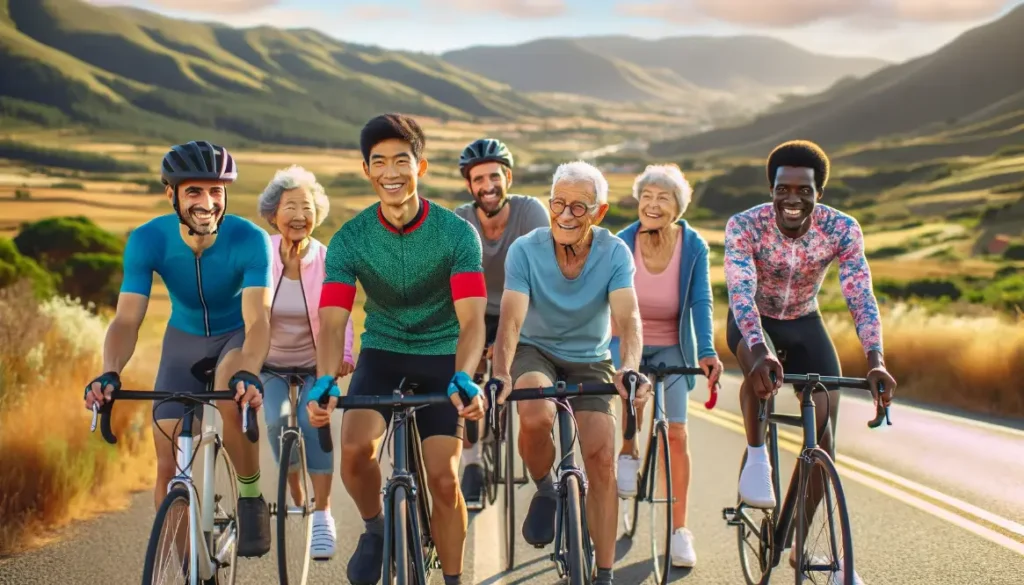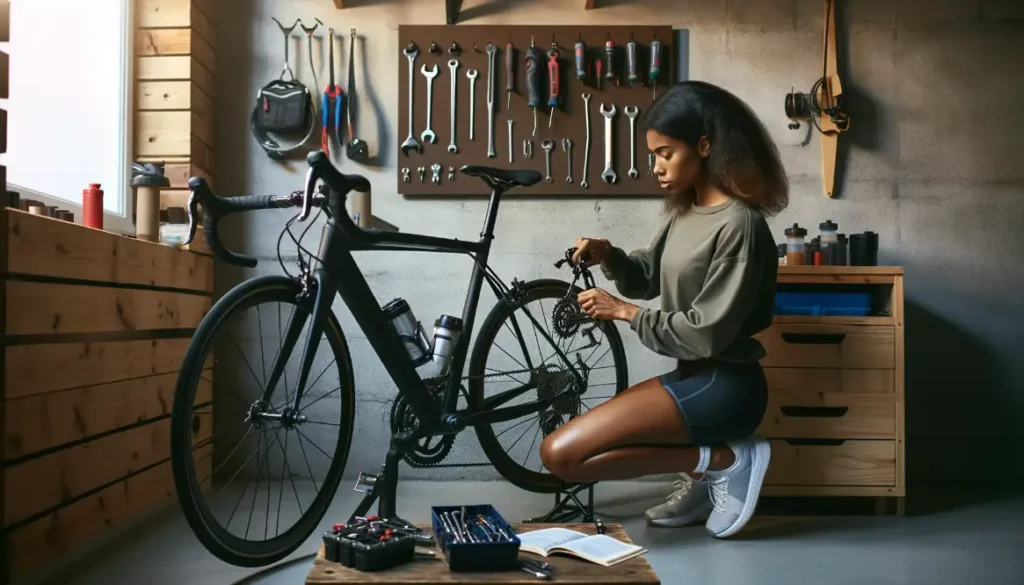
Taking up cycling can seem intimidating, but with some basic knowledge and preparation, beginners can quickly gain confidence and enjoy all of the benefits this fantastic sport offers. From choosing the right bicycle to learning maintenance tips, read on for essential information every new cyclist needs.
Choosing the Right Bike
The type of cycling you plan to do will dictate the best bike choice. Consider your goals and needs to select the optimal model to get you pedaling happily.
Mountain Bikes
- Rugged frames and components for trail riding
- Front shock absorbers
- Chunky knobby tires
- Excellent brakes
See also: Best MTB Cycle under 15000 in India 2024
Road Bikes
- Lightweight frames made for speed
- Skinny smooth tires
- Curved handlebars for aerodynamic positioning
Hybrid Bikes
- Blend of mountain and road features
- Flat handlebars for upright stance
- Medium width tires for versatility
See also: Best Hybrid Cycle Under 15000 Rupes In India 2024
Cruisers
- Sweeping handlebars
- Plush seats
- Fat tires for casual riding
Bike Fit
To stay safe and efficient, you must get the right size and adjust components to match your body.
Tips for Proper Bike Fit
| Component | Fit Tip |
|---|---|
| Frame Size | 1-3 inches clearance between top bar and crotch while standing over bike |
| Seat Height | Slight bend in knee at full pedal extension |
| Handlebar Position | Allows comfortable arm bend while riding |
| Seat Position | Balanced over pedals in natural, neutral pelvis position |
Safety Gear
Protect yourself from injury by always wearing appropriate cycling equipment.
Helmet
A helmet is absolutely mandatory every time you ride to defend your head from trauma in case of crashes. Ensure it meets safety standards and fits properly.
Other Safety Equipment
Consider wearing gloves, glasses or goggles, and bright, reflective clothing to enhance protection. Padded shorts help prevent saddle soreness on long rides. Fenders keep splashing to a minimum.
Learning to Ride
Master essential riding techniques in a safe place before heading out into real-world cycling. Take it slowly and repeat drills until everything becomes second nature.
Top Skills to Practice
- Balancing
- Pedaling/Coasting
- Starting and stopping
- Turning at various speeds
- Climbing hills
- Descending safely
- Changing gears
- Braking smoothly
- Using hand signals
Rules of the Road
Obey all traffic laws, signs, signals, lane markings and be considerate around vehicles and pedestrians.
Interacting with Vehicles
Ride far enough from parked cars to avoid doors suddenly opening. Allow 3 feet of passing distance when being overtaken. Make eye contact and yield to vehicles when safe. Use bike lanes if available, or ride close to road edge. Avoid restricted highways.
Navigating Intersections
Approach all cross traffic slowly. Stop fully and proceed when clear. Follow all signals and signs. Turn from designated lanes properly. Walk bike across extremely busy junctions.
Finding Places to Ride
Seek suitable areas as you build skills, then expand once comfortable cycling around home.
Good Places to Start
- Paved park loops
- Canal towpaths
- Dedicated bike paths and trails
Other Options
- Quiet neighborhood streets
- Campground loops
- School tracks or stadiums after hours
Group Rides
Join beginner-friendly group rides through local shops and clubs for camaraderie, motivation and support lacking when riding solo initially.
Bike Maintenance

Keep your bike running smoothly and head off problems through regular care and attention at home. Seek professional help for complex mechanical issues.
Do-It-Yourself Maintenance
- Clean entire bike
- Lube chain
- Check tire pressure
- Assess tread wear
- Test brakes
- Tighten loose parts
- Adjust fit
- Pack repair tools
See also: Bicycle Tune Up Checklist
Leave Complex Repairs to the Experts
- Major drivetrain fixes
- Wheel truing
- Bearing adjustments
- Suspension system repairs
Joining the Cycling Community
Beyond fitness and transportation perks, cycling offers wonderful social benefits through bonding among passionate riders.
Clubs and Shops
Visit local bike shops to discover great area routes. Chat with staff and fellow cyclists for insider tips. Check event listings. Join a recreational club.
Making New Friends
The more you ride, the more fellow cyclists you will meet to share stories, training advice and travel ideas with. Help foster a supportive community.
Conclusion
Cycling opens up new adventures that nourish body and spirit. Avoid rookie mistakes by following this starter guide. Soon you will be pedaling confidently and comfortably! Let the fun begin!
Additional Tips
- Record mileage/routes to track improvement
- Bring repair tools/supplies on longer rides
- Pack high-energy snacks to fuel longer outings
- Progress distance sensibly over time
FAQs
Q: How often should I check my bike before riding?
A: Do a quick check of components like handlebars, brakes, gears and tires before every ride to spot issues immediately.
Q: What gear should I start out in from a stop?
A: Use easier gears (larger sprockets) to get moving, then shift up through the gears for more efficiency riding faster.
Q: Is cycling safe for beginners?
A: Cycling has risks, but starting slow in safe environments minimizes dangers substantially. Defensive riding and gear boost safety.
Q: Can I cycle if I’m out of shape?
A: Cycling lets people of all fitness levels participate. Adjust intensity and distance to your capability which will expand naturally through regular riding.
Q: What should I bring on a bike ride?
A: Always have an ID, cash, phone, tools/spares, water, snacks, extra clothes, and emergency contact info on longer rides.






